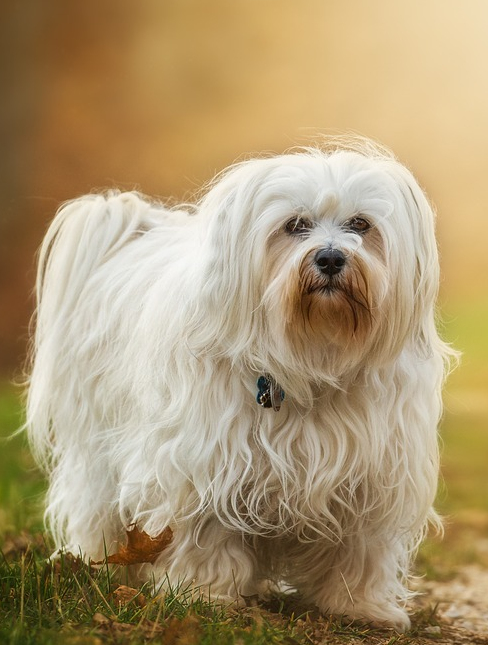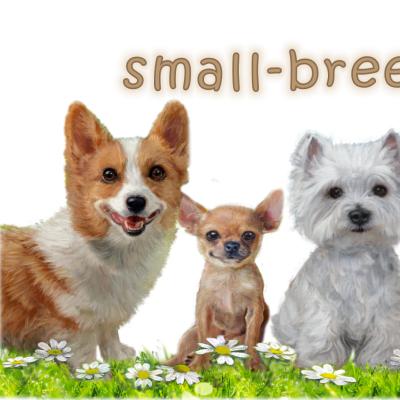PLEASE NOTE: Dog Garden Flags are currently unavailable. Please check back later. Thanks for your interest.
Havanese
Breed Information
Havanese 101: All Dogs are individuals. They page below will describe the typical characteristics of most Havanese.

| Trainability | |
| Good General Health | |
| Easily Housebroken | |
| Low Maintenance | |
| Good w/Other Pets | |
| Non-Shedding |
"Dogs are not our whole lives, but they make our lives whole.”
-Roger Caras
All the many reasons to love them...
Watch Dogs-They make keen watch dogs! They're not known as yappy dogs, so you can be sure when he's barking, there's a reason for it.
Size- Show dogs range between 8 1/2" to 11 1/2" high and 7 to 13 pounds. Temperament, as opposed to size, should your first consideration when shopping for any toy breed. A regular walk and occasional run will suit exercise needs well in any sort of dwelling, large house or apartment.
Friendly-This is a very "people friendly" breed. Not especially shy or timid, he can be trusted not to nip at the heels of strangers. His is also friendly with and tolerant of other animals.
Trainability-This breed does well in obedience training. Shouting, impatient or harsh training is completely unnecessary and will hinder progress with any breed. Patience and positive reinforcement will go a long way when training.
Excitability-Not an overly excitable breed, they are happiest when pleasing and getting the attention of their owner. You'd sooner find them curled up in your lap than bouncing off your walls.
Loyal-They are very affectionate and loyal little dogs. He will want to be with you on every trip to the bathroom, dining room, kitchen...
Non-Shedding- Though they are non-shedding (losing very little to no hair), they still release dander. If you have allergies and you're considering a Havanese, it would be best to test your tolerance first with a visit or two.

Pet stores should never be an option. Buying from a pet shop keeps the puppy mill industry booming. 'Back yard breeders' and puppy mills are in it for profit only with little or no regard for the health and well being of their animals.
More About the Havanese
Housebreaking difficulties- Some toy breeds are difficult to housebreak... A Havanese is no exception. You'll need to be very patient and probably clean up several messes in the meantime. Small dogs come with small bladders.
15+ Years of commitment- This is where you need to be honest with yourself. Will you be moving soon? Planning children? A new job? If you can't make the commitment to keep a dog for the next 15+ years, DON'T GET ONE! Dogs are not "until" animals. You don't get one "until" you have children, "until you're not lonely anymore, "until" you pick up more hours at work, "until" it's not a cute puppy anymore... They are forever animals. Most dogs end up in high-kill shelters because of irresponsible people. Be a part of the solution, not a part of the problem.
If you want an "until" dog, look into fostering. Pick a rescue group near you and volunteer to foster a dog until a forever home can be found... You can choose the breed, size, gender and behavior, just like buying or adopting.
Separation anxiety is common- He will show you his frustration by destructive chewing and barking or by having "accidents" on your furniture. This is probably not the breed for you if you work long hours and would have to leave him home alone.
Maintenance- Their coats come in three varieties... Smooth, curly and wavy. All three types need regular brushing and grooming. The coat is more easily cared for by having it trimmed regularly, but if you prefer a more natural look, your Havanese will need brushing at least twice per week.
Fragility of toy breeds- Though the Havanese is a sturdy little dog for the most part, they are still a toy breed. They are known to enjoy the company of children, but we would caution against bringing a puppy into a home with toddlers. Older, well behaved children should do very well with an older and well behaved Havanese.
Havanese Health Issues-
Luxating patellas-A joint condition in which kneecaps dislocate. This is very painful for your dog and expensive to correct. This is a common complication among many small breed dogs.
Legg-Calvé-Perthes syndrome- A disease seen in varying degrees in many small breed dogs. It's degenerative and leads to bone loss and collapse of the hip joint which is obviously painful. Early treatment can help to prevent degenerative arthritis.
Hip Dysplasia is a crippling disease which can eventually lead to lameness and arthritis. It's caused by genetic as well as environmental factors and severe cases often require surgery.
Chondrodysplasia is another disease that still surfaces in this breed. Bowed or dwarfed legs is a sign of the condition.
Heart Murmurs, Deafness and Cataracts are some of the other conditions that responsible breeders and organizations like the Havanese Club of America are helping to eradicate.
Luxating patellas-A joint condition in which kneecaps dislocate. This is very painful for your dog and expensive to correct. This is a common complication among many small breed dogs.
Legg-Calvé-Perthes syndrome- A disease seen in varying degrees in many small breed dogs. It's degenerative and leads to bone loss and collapse of the hip joint which is obviously painful. Early treatment can help to prevent degenerative arthritis.
Hip Dysplasia is a crippling disease which can eventually lead to lameness and arthritis. It's caused by genetic as well as environmental factors and severe cases often require surgery.
Chondrodysplasia is another disease that still surfaces in this breed. Bowed or dwarfed legs is a sign of the condition.
Heart Murmurs, Deafness and Cataracts are some of the other conditions that responsible breeders and organizations like the Havanese Club of America are helping to eradicate.
Learn more about me, my art, the mission of this site and Rescue Dogs Are Better here.
We also welcome you to contact us if there are any other questions we can answer for you about anything you saw or read on this site.


New! Comments
Leave us a comment if you have something you'd like to share or add to what you just read here. Or contact us with questions or comments.